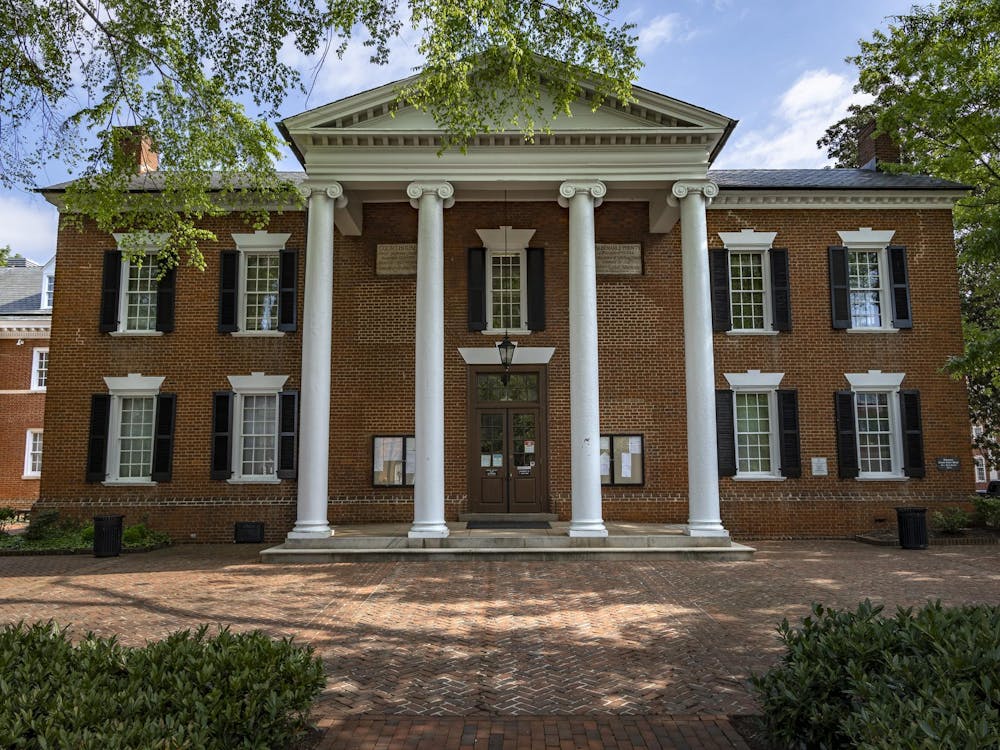I BELIEVE it was Shakespeare's Juliet who quipped some delightful balrderdash about names and how they don't matter. If I recall correctly, however, she ended up at the wrong end of a pointy dagger by the time Act V came around. So much for all that radical "a-rose-is-a-rose" talk.
Yes, my friends, names really do matter. Properly addressing another person, especially if s/he happens to be a University professor, can mean all the difference between cultivating a respectful relationship, and tasting the sweet, sweet marble of a 15th century sepulchre. Well, kind of. Most of the time, professors will guide students in the right direction by articulating their preferences on the first day of class. "You can call me (blank)," they'll say reassuringly, and everything falls together like so many clumps of O-Hill risotto. Mmm-mmm, informative.
Other instructors, however, omit this vital counsel from their initial lectures, thus casting a semester-long pall over the seedling growths of professor/student discourse.
When professors neglect to address the name issue, they leave students with some fundamental dilemmas: How am I going to talk to this person? Can I expect to reach any level of comfort with him/her during office hours? What happens if I make a wrong move?
In order to answer these inner questions, many students start making inferences based on their own observations of the professor in question. If he wears Doc Marten lace-ups to lecture, call him by his first name. Conversely, a three-piece suit says, "To Sir, With Love." You can call a discussion section TA by his or her first name, and foreign language instructors often follow suit.
Those are pretty much the only categories students have to work with. For some professors, therefore, it's nearly impossible to judge. And that brings me to my next point.
How do you address a faculty member when you're not sure what his preferences are?
Personally, I like to cover all my bases. The age-old "Title + Surname" equation usually adds up to safety, if not success, in most areas of correspondence. The formality conveys respect, while simultaneously emphasizing the intellectual distance between student and professor. It's homage to the experience and accomplishments of the established academics among us. Best of all, no one gets offended by this form of address, and everyone - technically - leaves the conversation happy.
But sometimes I wish that boundary didn't make me feel like such an insignificant speck on the canvas of University life. Refreshingly, the University forbids the use of the title "Doctor" to any faculty member not holding a medical degree. At the same time, however, I want to be on an even more level playing field when I talk with my professors. At a University founded upon democratic ideals, dialogue between professors and students should be an equal exchange of theories and hypotheses, questions and answers. Why reinforce the idea of intellectual hierarchy in our everyday speech?
Because of one word: fear. You couldn't pay me to address some of my professors by their first names. The risk of offending them with undue familiarity is just too great.
Besides, there is something charmingly appropriate about the tradition and respect implied by the title "Professor," and far be it from me to downplay the very real distance between a faculty member with more than one Ph.D. and my own measly B.A.-to-be. At the same time, there must be faculty members out there who wouldn't mind a more equalized type of conversation with students. How about a compromise, then? I'll call you Professor So-and-So, and you can call me Ms. Petrosino from now on.
Or we can forgo the idea of proper names all together. Certainly, this seems to be the direction in which many now are heading. Whenever I'm not sure which appellation to use, I simply engineer the conversation so that I never actually have to utter the professor's name. This course of action proves difficult, however, when I glimpse a favorite faculty member while casually walking to class, or attending a football game. Somehow yelling out, "Hey you in the tie!" just doesn't get their attention as effectively as using a proper name would.
On the other side of the coin, I'm not sure that professors have reached a consensus on how to address students in their correspondence. Most e-mails I receive from faculty members are without a salutation of any kind. Instead of starting out with "Dear (name)," or simply with "(name)," they begin writing their messages on the first line the Simeon e-mail program provides. When they include the original message text in their reply, this practice of non-salutation has the same effect as replying to a written letter by scribbling on the bottom of a used piece of paper.
Equitable communication between faculty members and students leads to profitable discussion and debate for the entire University community. Although it may seem like a small issue, much is lost when students question how to address their professors. I encourage all faculty members to guide students along the "appellation trail," so we may reach some level of comfort in communicating with them.
(Kiki Petrosino's column appears Wednesdays in The Cavalier Daily.)






